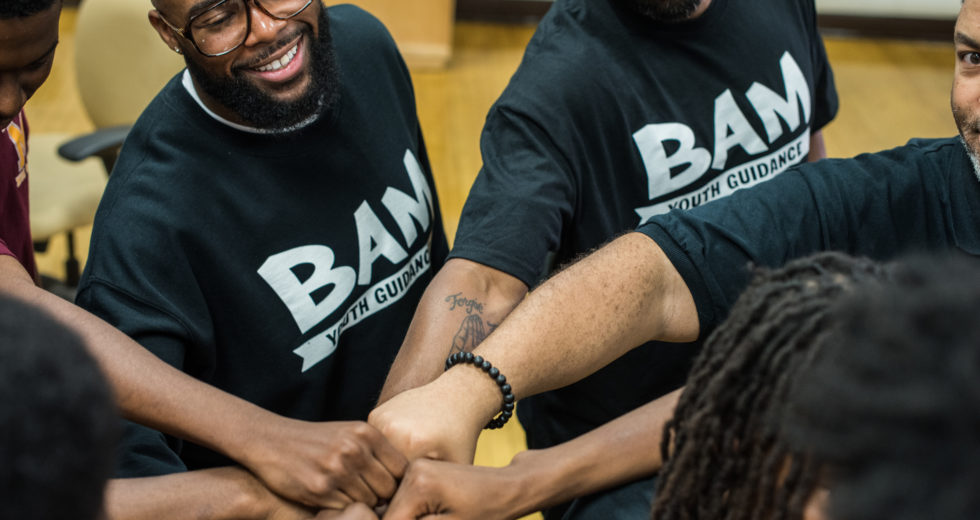What Makes the Becoming a Man Program Successful?

This qualitative study looks at the Becoming a Man (BAM) program, an in-school group-process intervention designed to help young men navigate difficult circumstances that threaten their future. This study explores how young people develop in the context of BAM programming in Chicago Public Schools and highlights the most effective components of the program.
What We Did
This research involved semi-structured interviews with a sample of 29 youth and 10 counselors who participated in the program in the 2014-15 academic year. Analysis identified and compared key themes. Past randomized control trials have shown statistically significant, positive impacts on education outcomes and justice system involvement for BAM participants (Heller, Pollack, Ander & Ludwig, 2013; Heller et al., 2016). This qualitative study was designed to illustrate how the program is working.
What We Found
Five core components of Becoming a Man work together to foster youth engagement and positive development:
- Safe space: Youth referred to the BAM room as a safe, welcoming and respectful space.
- Core values: All youth provided examples of how they apply the core values of the program, which include integrity, self-determination, positive anger expression, accountability, respect for womanhood and goal setting.
- Activities and missions: These provide youth a way to experience, reflect on and internalize values.
- Check-ins: Every BAM meeting starts with each member reflecting on how they feel physically, intellectually, emotionally, and spiritually.
- Relationships: A sense of community and trust is built through the relationship to the counselor and to each other.
A sense of “belonging” is a key mechanism through which the program works. This emerges as the result of three social and emotional processes practiced through BAM participation. First, understanding, contributing to, and enacting the social norms of the BAM groups. Second, using BAM core values and supportive relationships to build a sense of control over one’s future. And third, developing a stronger understanding of their own and others’ emotional states and using language to express themselves.
What It Means
For the operation of this program:
- The responsibilities of the counselors need to be explicit and ongoing training robust.
- The curriculum should have greater emphasis on linking core values to events and emotions raised during check-ins.
- Schools need to provide a dedicated room for the program, and integrate the BAM counselors with other key school staff.
- Conditions that lead to youth removal from the program, and the process for doing so, need to be clear.
The influence of group involvement on identity development warrants further study. BAM creates the foundation for developing trusting relationships and identity exploration. Understanding how youth’s sharing of their stories, and how those are experienced by others in the group, would further knowledge about how narrative identity development evolves and how social interventions can effectively influence the process.



 Thank you for your interest in Chapin Hall’s research. Please share some information to access this file.
Thank you for your interest in Chapin Hall’s research. Please share some information to access this file.